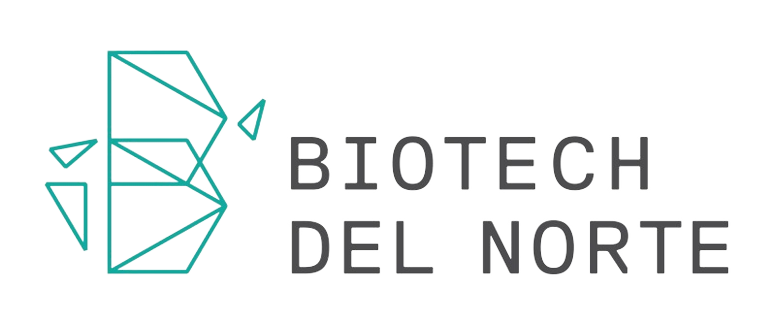0-9
A
- Allele
- It is one of two or more versions of a DNA sequence (a single base or a segment of bases) at a given genomic location.
- Nucleic Acid
- They are large biomolecules that play essential roles in all cells and viruses. A major function of nucleic acids involves the storage and expression of genomic information.
B
- Biomarkers
- A biological molecule found in blood, other body fluids, or tissues that is a sign of a normal or abnormal process, or of a condition or disease. A biomarker may be used to see how well the body responds to a treatment for a disease or condition.
C
- CNV: Copy Number Variation
- It refers to a circumstance in which the number of copies of a specific segment of DNA varies among different individuals’ genomes. The individual variants may be short or include thousands of bases. These structural differences may have come about through duplications, deletions, or other changes and can affect long stretches of DNA.
D
- DNA: Deoxyribonucleic Acid
- It is the molecule that carries the genetic information for the development and functioning of an organism. The name comes from its chemical structure.
- Deletion
- It is a type of mutation that involves the loss of one or more nucleotides from a segment of DNA. A deletion can involve the loss of any number of nucleotides, from a single nucleotide to an entire piece of a chromosome.
- Duplication
- it refers to a type of mutation in which one or more copies of a DNA segment (which can be as small as a few bases or as large as a major chromosomal region) is produced. Duplications occur in all organisms.
E
- Exome
- It is the sequence of all the exons in a genome, reflecting the protein-coding portion of a genome. In humans, the exome is about 1.5% of the genome. Exons contain the nucleotides that directly encode proteins, whereas introns are stretches of DNA between the exons and do not encode proteins.
- Gene Expression
- It is the process by which the information encoded in a gene is used to either make RNA molecules that code for proteins or to make non-coding RNA molecules that serve other functions.
F
G
- Gene
- It is considered the basic unit of inheritance. Genes are passed from parents to offspring and contain the information needed to specify physical and biological traits. Most genes code for specific proteins, or segments of proteins, which have different functions within the body. Humans have approximately 20,000 protein-coding genes.
- Genome
- It is the entire set of DNA instructions found in a cell. In humans, the genome consists of 23 pairs of chromosomes located in the cell’s nucleus, as well as a small chromosome in the cell’s mitochondria. A genome contains all the information needed for an individual to develop and function.
- Genomics
- It is a field of biology focused on studying all the DNA of an organism, that is, its genome. Such work includes identifying and characterizing all the genes and functional elements in an organism’s genome as well as how they interact.
H
- Inherited
- It refers to a trait or variants encoded in DNA and passed from parent to offspring during reproduction. Inheritance is determined by the rules of Mendelian genetics. While most medical information is mainly relevant to a specific patient, one of the reasons that inherited genetic information raises so many complicated ethical questions to appear from the fact that it can impact everyone in a family.
I
- InDel: Insertion / Deletion
- It is a type of mutation that involves the addition of one or more nucleotides into a segment of DNA.
- Insertion
- It is a type of mutation that involves the addition of one or more nucleotides into a segment of DNA. An insertion can involve the addition of any number of nucleotides, from a single nucleotide to an entire piece of a chromosome.
J
K
L
M
- MSI: Microsatellite Instability
- A change that occurs in certain cells (such as cancer cells) in which the number of repeated DNA bases in a microsatellite (a short, repeated sequence of DNA) is different from what it was when the microsatellite was inherited.
- Marker
- It is a DNA sequence, typically with a known location in a genome. Markers can reflect random sequences, genomic variants, or genes.
- Sample
- It is the stated quantity of a body fluid, exhalation (breath), hair, tissue, or process derived from the examination, study, or analysis of one or more representative properties of a whole.
- Mutation
- It is a change in the DNA sequence of an organism. Mutations can result from errors in DNA replication during cell division, exposure to mutagens, or a viral infection. Germline mutations (that occur in eggs and sperm) can be passed on to offspring, while somatic mutations (that occur in body cells) are not passed on.
N
- NGS: Next-Generation Sequencing
- It establishes the order of the bases that make up DNA and refers to the use of technologies for sequencing DNA faster and cheaper than their predecessors. It can sequence an entire human genome in a single day and for less than 1,000.
O
- Oncogenomics
- It uses genetic techniques for the study, approach, research, development, and monitoring of cancer.
P
- Pathological
- It can be the main or partial cause of a condition, physical or mental illness that an individual suffers.
- Penetrance
- It describes whether gene carriers of a condition develop features of the condition. Incomplete penetrance occurs in most disorders. Conditions with extremely high penetrance are rare. Penetrance varies between sexes; in female MLH1 carriers, penetrance is only around 70% by 70 years of age, possibly due to a protective effect from factors such as estrogen and other hormones.
- Polymorphism
- It refers to the presence of two or more variant forms of a specific DNA sequence that can occur among different individuals or populations.
Q
R
- RNA: Ribonucleic Acid
- It is a nucleic acid present in all living cells. Cells make several different forms of RNA, and each form has a specific job in the cell. One of these cells is called Messenger RNA or RNAm. Many forms of RNA have functions related to making proteins.
S
- SNP: Single Nucleotide Polymorphism
- It is a genomic variant at a single base position in the DNA. Scientists study if and how SNPs in a genome in-fluence health, disease, drug response, and other traits.
- SNV: Single Nucleotide Variant
- It is the variant of a single nucleotide that occurs at a specific genomic position.
- DNA Sequencing
- It refers to the general laboratory technique for determining the exact sequence of nucleotides, or bases, in a DNA molecule. The sequence of the bases (often referred to by the first letters of their chemical names: A, T, C, and G) encodes the biological information that cells use to develop and operate. Establishing the se-quence of DNA is key to understanding the function of genes and other parts of the genome.
- Syndrome
- It is a group of traits or conditions that tend to occur together and characterize a recognizable disease. Some syndromes have a genetic cause.
T
- TMB: Tumor Mutational Burden
- It is defined as the number of somatic mutations per megabase of the interrogated genomic sequence, varies across malignancies.
U
V
W
X
Y
Z
- Strimbu K, Tavel JA. What are biomarkers? Curr Opin HIV AIDS 2010; 5: 463-466.
- Talking Glossary of Genetic Terms | NHGRI. (s. f.). https://www.genome.gov/es/genetics-glossary
- David T. Miller, Kristy Lee, Wendy K. Chung, Adam S. Gordon, Gail E. Herman, Teri E. Klein, Douglas R. Stewart, Laura M. Amendola, Kathy Adelman, Sherri J. Bale, Michael H. Gollob, Steven M. Harrison, Ray E. Hershberger, Kent McKelvey, C. Sue Richards, Christopher N. Vlangos, Michael S. Watson, Christa Lese Martin, and ACMG Secondary Findings Working Group, ACMG SF v3.0 list for reporting of secondary findings in clinical exome and genome sequencing: a policy statement of the American College of Medical Genetics and Genomics (ACMG), Genetics in Medicine (2021) 23:1381-1390; https://doi.org/10.1038/s41436-021-01172-3

